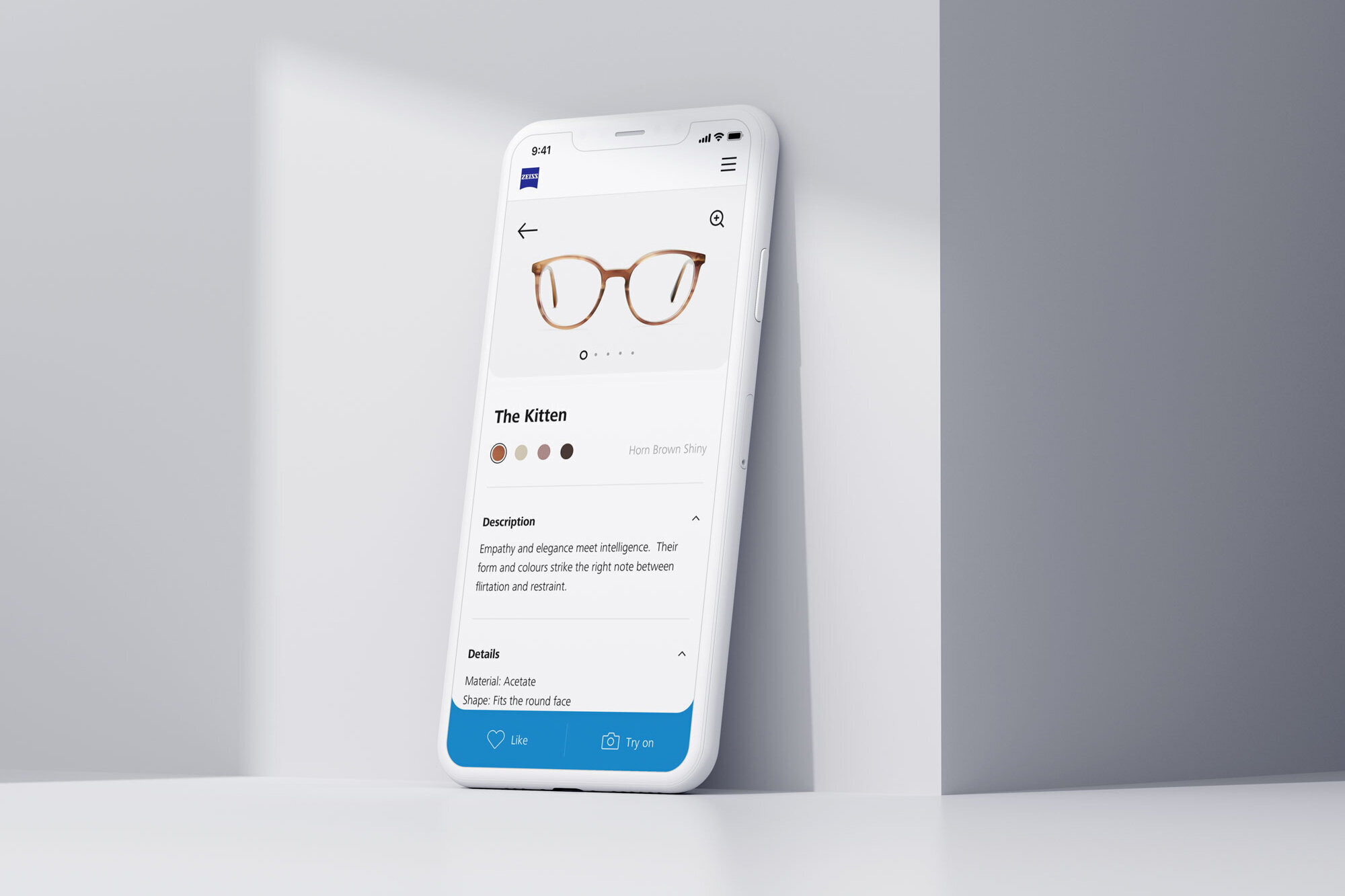
We integrated a platform with a range of spectacle frames, connected it to the ZEISS lens collection, and devised an ordering system that effectively directed customers to our partner opticians.
We also used chatbots and questionnaires to recommend the right products. This case describes the different steps of the concept and design phase.
The Task
ZEISS is renowned for its high-tech optical products, particularly as one of the world's premier producers of spectacle lenses known for their exceptional quality.
As Creative Director at Etribes, Dustin Lundt was tasked with developing a digital product aimed at directing customers to optician stores certified by ZEISS, where they could purchase ZEISS lenses. In a market where purchasing glasses typically revolves around investing in branded frames, this posed a significant challenge.
Prior to beginning the project, extensive research was conducted on the market and target audience. It became evident early on that simply selling spectacle lenses directly to end customers would not suffice. Therefore, we aimed to integrate them with their practical application: the frames. Armed with this insight, our first prototype took a bold approach: What if we emphasized the lenses themselves, giving them greater prominence and importance?
We developed mockups that included a switch between glasses and racks. Both with the same hierarchy. The Lens Detail Pages - i.e. the product pages - should represent the individual glasses like high fidelity products. In our journey for the user, we courageously started with the glasses and then moved on to the frames. According to the motto: "You are here to see better", we tried to bring the glasses more and more into the spotlight.
Selection of Products
To streamline the selection of individual lenses, we developed a questionnaire that provides personalized recommendations to users and saves them directly to their favorites as the test 'result'. All information stored in the favorites can be linked to a ZEISS ID account, ensuring accessibility for opticians. Additionally, we incorporated advanced tools such as Virtual Try On for frame selection.
Kill your Beliefs
We needed to test our approach, so we conducted one-on-one interviews where participants viewed and commented on our prototype. Through these sessions, we gained valuable insights, including the realization that in the digital realm, lenses were often seen as a secondary consideration in eyeglass purchases. In fact, 95% of users typically chose the frame first, often due to the traditional sequence learned from opticians. To address this, we focused on making the platform more flexible, enhancing navigation options, and accommodating this preferred order of selection.
Favorites as Central Account Mechanism
All products on the platform feature a 'like' functionality, allowing users to save their preferences in the Favorites section. This section serves as a blend of wish list and shopping basket. Given the limited storage capacity for saved products, we implemented a notification system to ensure users are always aware of this limitation. This transparency extends beyond just the Favorites section to include the overall 'like' or 'dislike' preferences.
The Way to the Optician
Unlike other online platforms, ZEISS places significant emphasis on personalized consultation with opticians. Achieving perfectly fitted glasses requires precise measurements of the eyes. The excellence of ZEISS optical products underscores this precision. Therefore, access to ZEISS measuring tools becomes essential.
This process is communicated across various pages using different methods (e.g., as next steps within favorites or integrated into the content itself). In the conversion process, users are guided to schedule an appointment by selecting a nearby optician, specifying their preferred date and time, and receiving a confirmation email.
The optician can then prepare for their new client by assembling a selection of spectacle frames. After accurately measuring the client's eyes, the appropriate precision lenses are chosen. Ahead of this, the optician receives adequate preparatory information through automated emails.
Currently, this product is in its testing phase in the Netherlands, with plans for a broader rollout across Europe.












